
Feature Photo: Photography Stock Ruiz / Shutterstock.com
The Eagles built a career on breezy harmonies and laid-back West Coast songwriting, and both “Take It Easy” and “Peaceful Easy Feeling” define that sensibility, making them fitting bookends for this list. Ringo Starr’s “It Don’t Come Easy” brought his signature warmth to a track that emphasized perseverance over instant gratification. Three Dog Night’s “Easy to Be Hard” took a different approach, turning “easy” into a contradiction by lamenting the callousness of those who preach kindness. Linda Ronstadt brought her unmistakable voice to “It’s So Easy,” transforming a rockabilly classic into a bold declaration of love. The Who’s “Pure and Easy” stood out as a deep-cut philosophical anthem, reflecting Pete Townshend’s grand musical ambitions.
Billy Joel’s “Easy Money” opened An Innocent Man with a punch, setting the stage for an album rooted in classic pop influences. Bobby Sherman’s “Easy Come, Easy Go” embraced the carefree spirit of its title, delivering a slice of pure 1970s pop. Little River Band’s “Take It Easy on Me” offered a softer, more melancholic take on the word, pleading for mercy in the wake of heartbreak. Roger McGuinn’s “Ballad of Easy Rider” carried the weight of an era-defining film, using its lyrics to conjure images of freedom and movement. And Guns N’ Roses shattered any notion that “easy” meant gentle with “It’s So Easy”, delivering one of their most aggressive early tracks.
# 10 – It’s So Easy – Guns N’ Roses
Guns N’ Roses unleashed “It’s So Easy” as one of the rawest and most aggressive tracks from their 1987 debut album, Appetite for Destruction. The song was recorded at Rumbo Recorders in Canoga Park, California, with production handled by Mike Clink. It was initially released as the band’s first single in the UK but failed to chart. However, over time, it became a staple of their live performances, known for its blistering intensity and sneering attitude. The lineup for the recording featured Axl Rose on lead vocals, Slash on lead guitar, Izzy Stradlin on rhythm guitar, Duff McKagan on bass, and Steven Adler on drums, a combination that defined the early and most iconic era of the band.
Lyrically, “It’s So Easy” presents a hedonistic and nihilistic take on the Los Angeles rock scene, with McKagan, who co-wrote the song, drawing inspiration from his early struggles and the excesses that came with rising fame. The track revels in a sneering disregard for consequences, captured in lines like “I see your sister in her Sunday dress / She doesn’t please / She just takes more than she gets.” The deliberate vocal shift in the chorus—where Axl Rose drops into a lower register—creates a menacing contrast, amplifying the song’s brooding atmosphere. Unlike other tracks from Appetite for Destruction, which often depict the dangers of excess with a sense of regret or reflection, “It’s So Easy” embraces its reckless abandon with no apologies.
In the context of this list, “It’s So Easy” uses the word “easy” with unmistakable irony. While the title suggests a sense of effortlessness, the lyrics paint a much darker picture—one where indulgence leads to an emotional void rather than satisfaction. It contrasts sharply with other songs on this list that use “easy” in a more traditional sense of comfort or simplicity. With its relentless energy and unapologetic attitude, “It’s So Easy” remains one of Guns N’ Roses’ most ferocious recordings, embodying the raw, unfiltered spirit that made Appetite for Destruction a defining album of the era.
Read More: Slash: The ClassicRockHistory.com Interview
# 9 – Ballad of Easy Rider – Roger McGuinn
Roger McGuinn recorded “Ballad of Easy Rider” in 1969 as the title track for the film Easy Rider, a defining counterculture movie of its time. Initially conceived by Bob Dylan, who provided the first lines but declined to contribute further, McGuinn completed the song himself. His version was released on The Ballad of Easy Rider, the eighth studio album by The Byrds, though a solo rendition appeared in the film. Produced by Terry Melcher, the track was recorded at Columbia Studios in Hollywood and featured McGuinn’s distinctive 12-string guitar, complemented by atmospheric orchestration.
Lyrically, “Ballad of Easy Rider” embraces a sense of freedom and longing, paralleling the film’s themes of escape and disillusionment with the American dream. The imagery of flowing water—“The river flows / It flows to the sea / Wherever that river goes / That’s where I want to be”—evokes a desire for movement and transcendence, a sentiment echoed in many folk-inspired rock songs of the era. Unlike the hedonistic nihilism of “It’s So Easy” by Guns N’ Roses, this track presents a more poetic take on the concept of ease, equating it with spiritual liberation rather than reckless abandon. The melody’s gentle ebb and flow reinforce the song’s introspective nature, contrasting the film’s ultimately tragic conclusion.
Within the scope of this list, “Ballad of Easy Rider” stands apart for its understated elegance and lyrical depth. While other songs here may depict “easy” in terms of indulgence or simplicity, McGuinn’s composition treats it as an unattainable ideal—one that can only be pursued through movement, not possession. The song’s lasting impact is evident in its frequent covers and enduring association with the film, marking it as one of McGuinn’s most poignant recordings.
Read More: Top 10 Roger McGuinn Songs
# 8 – Take It Easy On Me – Little River Band
Little River Band recorded “Take It Easy on Me” for their 1981 album Time Exposure, marking a period of transition for the Australian group. Produced by George Martin, best known for his legendary work with The Beatles, the album was recorded at Air Studios in Montserrat. Though Glenn Shorrock was the band’s longtime frontman, the song featured bassist Wayne Nelson on lead vocals, signaling a shift that would soon make him the primary voice of the band’s biggest hit, “The Night Owls.”
Lyrically, “Take It Easy on Me” conveys the pain of lost love, with the narrator pleading for mercy as a relationship fades. Lines like “It used to be so easy to be your lover / We wandered through the days like they had no end” reflect a longing for the past, while the chorus—“Take it easy on me / It should be easy to see / I’m getting lost in the crowd”—captures the vulnerability of someone struggling to accept the inevitable. Unlike the reckless abandon in “It’s So Easy” by Guns N’ Roses, this track embodies emotional restraint, emphasizing heartbreak rather than hedonism. Similarly, “Ballad of Easy Rider” by Roger McGuinn romanticizes escape, whereas Little River Band’s song focuses on the inescapable weight of love and regret.
In the broader theme of this list, “Take It Easy on Me” exemplifies how the word “easy” can reflect emotional complexity rather than simplicity. While some songs here revel in the carefree, this one acknowledges that moving on is anything but. Its polished production, soaring harmonies, and Martin’s expert touch made it one of Little River Band’s most memorable ballads, solidifying their place as one of the era’s finest soft rock acts.
Read More: Top 10 Little River Band Songs
# 7 – Easy Come Easy Go – Bobby Sherman
Bobby Sherman recorded “Easy Come, Easy Go” in 1970, capitalizing on his meteoric rise as both a teen idol and pop star. The song appeared on his album of the same name and was produced by Jackie Mills, who played a significant role in shaping Sherman’s clean-cut, radio-friendly sound. With its bright, bouncy melody and polished arrangement, the track became one of Sherman’s biggest hits, reaching No. 9 on the Billboard Hot 100 and solidifying his status as a household name in the early 1970s.
Lyrically, “Easy Come, Easy Go” reflects a carefree attitude toward love and loss, a sentiment reinforced by the chorus: “Just hangin’ around, takin’ it slow / So happy I found I still can smile and dig the show.” While the song acknowledges heartbreak, it quickly moves past regret, embracing a philosophy that life moves on. This perspective differs from the wistful longing in “Take It Easy on Me” by Little River Band, which pleads for understanding in a breakup rather than brushing it off. Similarly, “Ballad of Easy Rider” by Roger McGuinn offers a more poetic and escapist take on the idea of moving forward, contrasting with Sherman’s lighthearted, almost self-deprecating approach.
Within the theme of this article, “Easy Come, Easy Go” exemplifies how the word “easy” can carry an air of emotional resilience rather than simply describing a laid-back lifestyle. While other songs here explore the weight of love, freedom, and recklessness, Sherman’s track stands out as a pop anthem that reassures the listener that even heartache can be shrugged off with the right attitude. It remains a defining moment in his career and a snapshot of the more innocent side of early ’70s pop.
Read More: Top 10 Bobby Sherman Songs
# 6 – Easy Money – Billy Joel
Billy Joel opened his An Innocent Man album in 1983 with “Easy Money,” a high-energy track that paid homage to the rhythm and blues influences of the early rock era. Recorded at Chelsea Sound and A&R Recording in New York City, the song was produced by Phil Ramone, who played a significant role in shaping Joel’s most commercially successful period. The track featured Joel on vocals and piano, David Brown on guitar, Doug Stegmeyer on bass, Liberty DeVitto on drums, and a vibrant horn section, all working together to create a punchy, brassy arrangement that mirrored the excitement of the gambling and risk-taking lifestyle described in the lyrics. While never released as a single, “Easy Money” gained recognition as the theme song for the 1983 Rodney Dangerfield film of the same name.
Lyrically, the song presents a narrator consumed by the rush of high-stakes gambling, desperate for the next big win. Joel sings, “Take me to the tables, take me to the fights / Run me like the numbers, roll me like the dice,” portraying a character willing to risk it all for the elusive promise of fortune. The song’s relentless energy and fast-paced rhythm reinforce the theme of impulsiveness and obsession, much like “It’s So Easy” by Guns N’ Roses, which captures the reckless lifestyle of rock excess. However, while Guns N’ Roses framed their song in a nihilistic, hard rock edge, Joel’s take leaned into a nostalgic, horn-driven rhythm and blues swagger, making it feel like a track that could have existed decades earlier.
Within this article’s theme, “Easy Money” explores the idea of “easy” as an illusion—the lure of effortless wealth that so often leads to destruction. Unlike “Easy Come, Easy Go” by Bobby Sherman, which takes a lighthearted approach to moving on, Joel’s track carries a sense of desperation beneath its celebratory tone, illustrating how the pursuit of “easy” can become an obsession. The song remains a unique entry in Joel’s catalog, reflecting both his reverence for early rock traditions and his ability to craft compelling character-driven narratives.
Read More: Billy Joel’s Best Song On Each Of His Albums
# 5 – Pure and Easy – The Who
The Who recorded “Pure and Easy” during sessions for Who’s Next, but the track remained unreleased until Odds & Sods in 1974. Written by Pete Townshend, the song was originally intended to be a crucial part of Lifehouse, the ambitious rock opera that never fully materialized. Instead, portions of the Lifehouse concept made their way into Who’s Next, though “Pure and Easy” was left off the final tracklist. Produced by Glyn Johns and recorded at Olympic Studios in London, the song featured Townshend on lead vocals and guitar, Roger Daltrey on backing vocals, John Entwistle on bass, and Keith Moon on drums, delivering a mix of classic Who power with an expansive, almost spiritual sound.
Lyrically, “Pure and Easy” conveys a message of transcendence through music, with Townshend describing a mystical “note” that embodies universal truth. The line “There once was a note, pure and easy / Playing so free like a breath rippling by” suggests that music, in its purest form, has the ability to connect people beyond the constraints of society. The song shares a thematic connection with “Ballad of Easy Rider” by Roger McGuinn, in that both tracks use poetic lyricism to illustrate freedom and movement, though McGuinn’s song leans into the nomadic spirit of the open road while “Pure and Easy” strives for a cosmic revelation. Unlike the more direct storytelling in “Easy Come, Easy Go” by Bobby Sherman, The Who’s composition layers its message within vivid, philosophical imagery.
Within this list, “Pure and Easy” stands out as the most introspective and conceptual interpretation of the word “easy.” Where “Easy Money” by Billy Joel presents a literal chase for wealth, Townshend’s vision of “easy” is tied to the purity of artistic expression, something that cannot be bought or controlled. The song remains a vital piece of Lifehouse lore and showcases Townshend’s ability to blend rock with deep thematic substance, reinforcing The Who’s legacy as more than just a powerhouse band but also as a vehicle for grand musical ideas.
Read More: Complete List Of The Who Songs From A to Z
# 4 – It’s So Easy – Linda Ronstadt
Linda Ronstadt’s version of “It’s So Easy” was recorded for her eighth studio album, Simple Dreams, which was released on September 6, 1977. Originally written and recorded by Buddy Holly and Norman Petty in 1958, the song took on new life when Ronstadt infused it with her signature blend of rock and country influences. Produced by Peter Asher, the track was recorded at The Sound Factory in Los Angeles, with Ronstadt’s powerhouse vocals leading a band that included Waddy Wachtel on guitar, Dan Dugmore on steel guitar, Kenny Edwards on bass, Don Grolnick on keyboards, and Russ Kunkel on drums. Her version reimagined the song as a polished yet energetic rock anthem, diverging from Holly’s more straightforward rockabilly arrangement.
Lyrically, “It’s So Easy” revolves around the intoxicating simplicity of falling in love, with Ronstadt defiantly pushing back against skeptics who claim that love is for fools. The lines “People tell me love’s for fools / Here I go, breaking all the rules” reinforce the idea that passion often overrides logic, a theme that contrasts sharply with the desperate longing found in “Take It Easy on Me” by Little River Band. Where that song pleads for emotional leniency, “It’s So Easy” revels in the recklessness of romance. Similarly, the carefree approach to love in Ronstadt’s delivery differs from the existential musings in “Pure and Easy” by The Who, showing how the word “easy” can be interpreted through vastly different emotional lenses.
Among the songs on this list, Ronstadt’s version stands out for its transformation of a rock and roll classic into a chart-topping hit. Released as a single, it reached No. 5 on the Billboard Hot 100 and solidified her reputation as one of the most versatile vocalists of the 1970s. Her ability to inject raw emotion into a seemingly simple song mirrored the success of other reinventions, such as her takes on “Blue Bayou” and “That’ll Be the Day.” “It’s So Easy” serves as both a tribute to rock’s early pioneers and a testament to Ronstadt’s ability to make any song entirely her own.
Read More: Linda Ronstadt’s Best Song On Each Of Her 1970s Studio Albums
# 3 – Easy to Be Hard – Three Dog Night
Three Dog Night recorded “Easy to Be Hard” for their 1969 album Suitable for Framing, bringing a raw, emotionally charged vocal performance to a song originally written for the rock musical Hair. Composed by Galt MacDermot with lyrics by James Rado and Gerome Ragni, the song was transformed by the band’s powerful arrangement and Chuck Negron’s soaring lead vocals. It was recorded at American Recording Company in California and produced by Gabriel Mekler. The studio musicians supporting the track included Michael Allsup on guitar, Joe Schermie on bass, Floyd Sneed on drums, and Jimmy Greenspoon on keyboards. The song was released as a single and climbed to No. 4 on the Billboard Hot 100, marking one of Three Dog Night’s early successes.
Lyrically, “Easy to Be Hard” is a scathing critique of hypocrisy, specifically targeting those who claim to care about social justice yet fail to show compassion to those closest to them. The lines “Do you only care about the bleeding crowd? / How about a needy friend?” deliver a biting rebuke to those whose empathy extends only to abstract causes while ignoring real, personal relationships. In contrast to the carefree romance of “It’s So Easy” by Linda Ronstadt, this song examines emotional detachment and the difficulty of genuine kindness. Where Ronstadt’s song embraces love without hesitation, “Easy to Be Hard” highlights the way people can be emotionally distant, despite professing care for others.
Among the songs on this list, “Easy to Be Hard” stands out as one of the most poignant and socially conscious, blending the theatrical origins of Hair with the gritty rock sound of Three Dog Night. Unlike “Easy Come, Easy Go” by Bobby Sherman, which embraces a lighthearted view of life’s ups and downs, this song forces listeners to confront uncomfortable truths about human nature. Negron’s emotionally intense performance, combined with the song’s somber instrumentation, created one of the most affecting ballads in the band’s catalog.
Read More: Top 10 Three Dog Night Love Songs
# 2 – It Don’t Come Easy – Ringo Starr
Ringo Starr recorded “It Don’t Come Easy” as his first major solo single after The Beatles disbanded, establishing himself as a legitimate solo artist in his own right. The song was recorded between February and March 1970 at Trident Studios in London, with George Harrison producing and playing guitar. Klaus Voormann handled the bass, Stephen Stills contributed piano on an early take, and Starr himself played drums. The track also featured a brass section and backing vocals arranged by Harrison. Released on April 9, 1971, in the UK and April 16, 1971, in the US, the song became one of Starr’s most successful singles, reaching No. 4 on the Billboard Hot 100 and No. 4 on the UK Singles Chart.
Lyrically, “It Don’t Come Easy” centers on perseverance and the belief that peace and love require effort, a theme that aligned with Starr’s optimistic personality. The lines “Got to pay your dues if you wanna sing the blues / And you know it don’t come easy” encapsulate the song’s message about resilience, while “Please remember, peace is how we make it” echoes the utopian ideals The Beatles embraced in their later years. Unlike “Easy Money” by Billy Joel, which portrays a reckless pursuit of quick wealth, Starr’s song suggests that success and happiness require patience and dedication.
Among the songs in this article, “It Don’t Come Easy” presents a unique perspective on the word “easy.” While other tracks, such as “Easy to Be Hard” by Three Dog Night, explore emotional detachment, and “It’s So Easy” by Linda Ronstadt revels in the exhilaration of love, Starr’s song reminds listeners that even seemingly simple things—trust, love, and personal fulfillment—take work. His collaboration with Harrison, coupled with the song’s uplifting melody and universal message, ensured its lasting appeal, making it one of the defining songs of Starr’s solo career.
Read More: 10 Most Rocking Ringo Starr Songs
# 1 – TIE – Take It Easy / Peaceful Easy Feeling – The Eagles
Closing out this list in a tie, “Take It Easy” and “Peaceful Easy Feeling” by The Eagles each embody the essence of the word “easy” in their own distinct way. “Take It Easy” was recorded for the band’s 1972 self-titled debut album and became their first single, released on May 1, 1972. Written by Jackson Browne and Glenn Frey, the track was recorded at Olympic Studios in London with producer Glyn Johns. Frey sang lead vocals, with Bernie Leadon on lead guitar and backing vocals, Randy Meisner on bass and backing vocals, and Don Henley on drums and backing vocals. The song reached No. 12 on the Billboard Hot 100 and established The Eagles as one of the defining acts of the decade.
Lyrically, “Take It Easy” presents a laid-back philosophy on life’s struggles, encapsulated in lines like “Don’t let the sound of your own wheels drive you crazy.” Its upbeat, country-rock sound captures a feeling of escape, contrasting with the wistful longing in “It Don’t Come Easy” by Ringo Starr. “Peaceful Easy Feeling,” also from Eagles (1972), took a more romantic approach. Written by Jack Tempchin, the song featured Leadon’s distinctive acoustic guitar work and Frey’s smooth lead vocals. Released as the band’s third single, it reached No. 22 on the Billboard Hot 100. The lyrics depict a man who finds contentment in love without the need for control, highlighted in lines like “I get this feeling I may know you / As a lover and a friend.”
These two songs serve as defining examples of The Eagles’ signature sound, blending country, rock, and folk influences. While “Take It Easy” delivers a road-weary traveler’s perspective on navigating life’s pressures, “Peaceful Easy Feeling” embraces the tranquility of emotional freedom. Their presence at the top of this list underscores their lasting influence, as both tracks remain anthems of a relaxed, free-spirited outlook on life.
Read More: The Eagles Best Song From Each Of Their Studio Albums
Check out similar articles on ClassicRockHistory.com Just click on any of the links below……
Read More: Classic Rock Bands List And Directory
10 Best Songs With The Word ‘Easy’ In The Title article published on Classic RockHistory.com© 2025




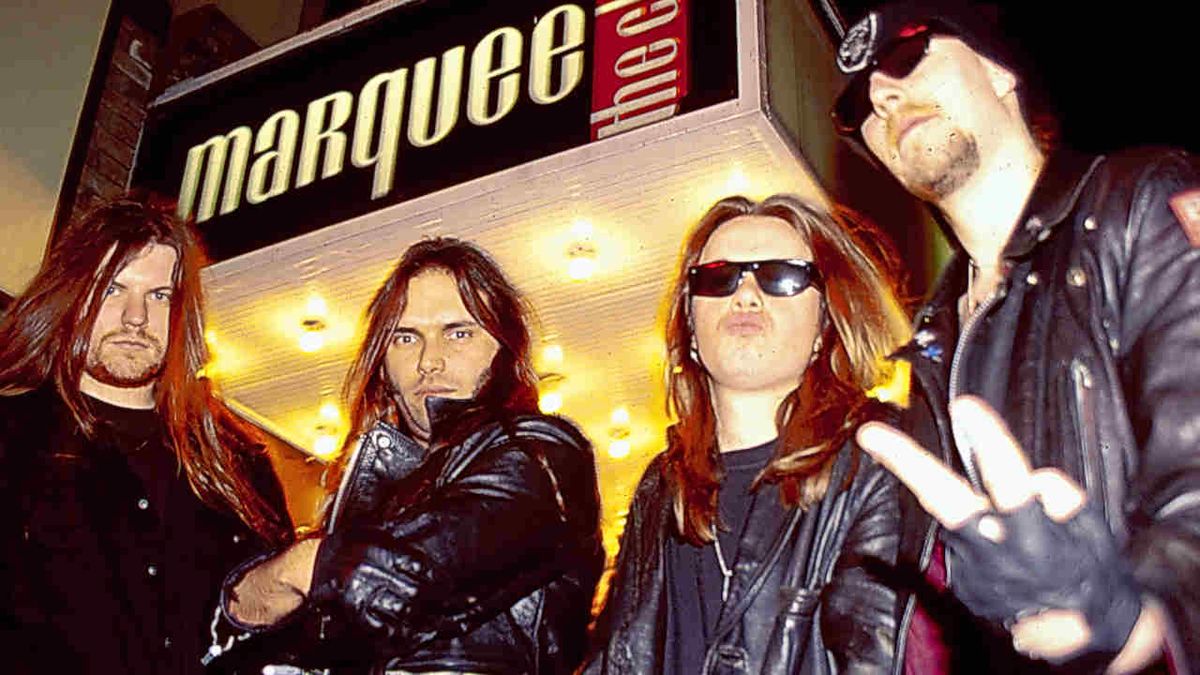

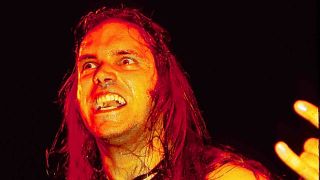

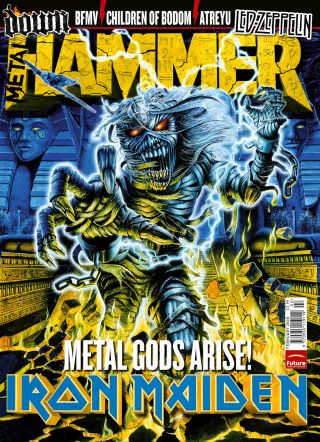

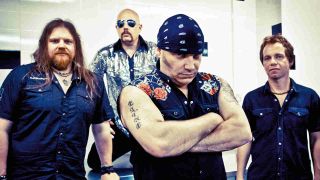


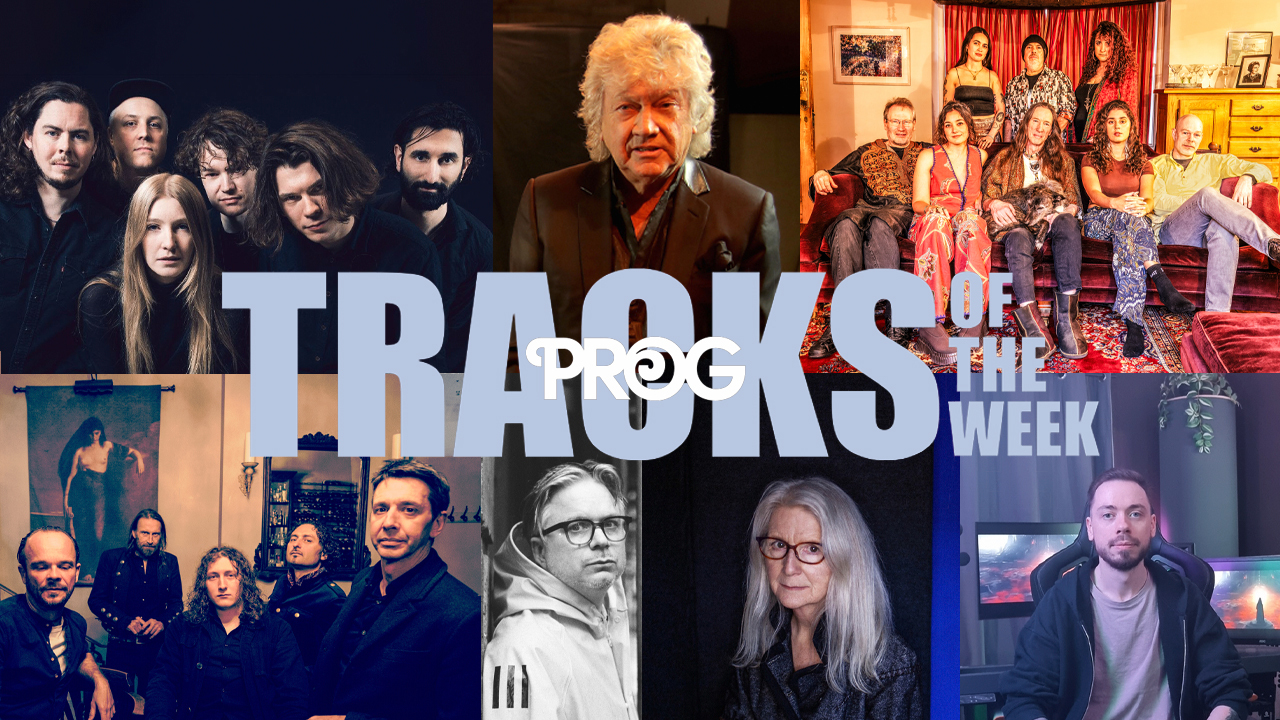




![Lights Of Skadi - Species [feat. Carl Sjursvens] (Official Music Video) - YouTube](https://img.youtube.com/vi/mn53sqn5JjI/maxresdefault.jpg)








